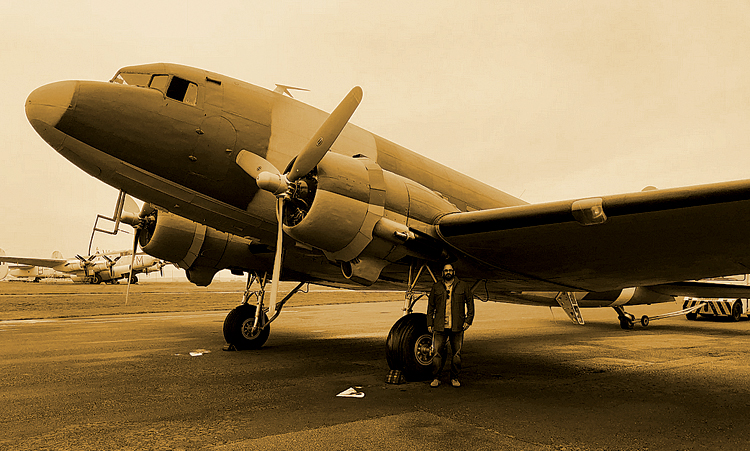INDIAN ARMED FORCES CHIEFS ON OUR RELENTLESS AND FOCUSED PUBLISHING EFFORTS

SP Guide Publications puts forth a well compiled articulation of issues, pursuits and accomplishments of the Indian Army, over the years

"Over the past 60 years, the growth of SP Guide Publications has mirrored the rising stature of Indian Navy. Its well-researched and informative magazines on Defence and Aerospace sector have served to shape an educated opinion of our military personnel, policy makers and the public alike. I wish SP's Publication team continued success, fair winds and following seas in all future endeavour!"

Since, its inception in 1964, SP Guide Publications has consistently demonstrated commitment to high-quality journalism in the aerospace and defence sectors, earning a well-deserved reputation as Asia's largest media house in this domain. I wish SP Guide Publications continued success in its pursuit of excellence.
Douglas DC-3 Dakota – An All-Time Great
The history of the Indian Air Force in the first few years after Independence, is also inextricably intertwined with that of the DC-3 Dakota

The World War II saw a large number of military aircraft types developed and deployed by the Allied nations as they sought first to check the rapid advance of Germany and Japan and later to defeat them. Yet, Supreme Commander General Dwight Eisenhower did not name a fighter or bomber, but the Douglas DC-3 light transport aircraft (United States military designation – C-47 Skytrain) as the single most important aircraft responsible for the Allied victory. The DC-3 could operate from practically anywhere – even from grass or dirt strips if paved runways were not available.
The DC-3 is a fixed-wing propeller-driven aircraft designed and produced by the Douglas Aircraft Company, now a part of Boeing. Its first flight was on December 17, 1935, and it entered commercial service with American Airlines in 1936. Powered by two Pratt & Whitney piston engines, it has a cruise speed of 333 kmph, range of 2,400 km and payload capacity of 2,700 kg or 32 passengers. Before World War II, the DC-3 had revolutionised air transport in many countries and had a lasting effect on the airline industry. So amazing was its speed, range and economy of operation, that, by the end of 1938, 95 per cent of all US commercial traffic was carried by the DC-3. In fact, it was the first aircraft to make a profit without government mail contracts or subsidies. By 1940, it captured 90 per cent of the global market.
Soon after the War, thousands of war-surplus DC-3s were unleashed on the market and were quickly grabbed by most of the world’s airlines which had long been starved for planes thanks to the manufacturers’ preoccupation with military aircraft. Air India too banked heavily on the DC-3 and its pilots affectionately referred to it as the “amiable cow”. The DC-3 remained a significant part of the global air transport system until the 1970s when jets became the norm.
The history of the Indian Air Force (IAF) in the first few years after Independence, is also inextricably intertwined with that of the DC-3 Dakota. In August 1947, the Royal Indian Air Force (RIAF) was totally unprepared for war. After some of its assets were transferred to Pakistan, it had just 70 fighter and fighter bomber planes plus seven DC-3s under No. 12 Squadron. When the Maharaja of Kashmir signed the Instrument of Accession on October 26, 1947, an urgent need arose to induct military forces into Srinagar to save the city and airport from being overrun by tribal militants backed by Pakistan. The only viable option was to airlift troops to Srinagar and it fell to 12 Squadron, under the command of Wing Commander K.L. Bhatia, to ferry in the protection force. The airstrips at Jammu and Srinagar were short and unpaved without navigational and landing aids, fire fighting and refuelling facilities. The first three Dakotas carrying troops of 1st Sikh Regiment landed at Srinagar on October 27, 1947. In the weeks ahead, an entire infantry brigade was airlifted to Srinagar. Apart from its transportation task, the Squadron also conducted improvised bombing sorties when required by rolling bombs out of the aircraft’s cargo bay.
In the spring of 1948, another crisis developed when the road from Srinagar to Leh was under threat of being severed and Poonch became isolated. The only way to prevent Poonch from falling was to deliver supplies and reinforcements through a rapidly built emergency airstrip. Once again it was the doughty Dakota that was pressed into service to carry supplies to the beleaguered troops and refugees. On May 24, 1948, Air Commodore Mehar Singh led a flight of six Dakotas across the Himalayan ranges of up to 6,000 metres height before landing at an improvised sandy airstrip next to the River Indus at a height of 3,500 metres. The aircraft had never flown at such high altitudes before. It had neither deicing equipment nor a pressurisation system. Over the next few days, soldiers, arms and ammunition, food, tents and medical stores were flown in and Ladakh was eventually saved from falling into enemy hands. The air bridge to Poonch was maintained for a year during which 12 Squadron flew over 700 sorties and airlifted 1,000 tonnes of stores before the declaration of ceasefire on January 1, 1950.
Civil DC-3 production ended in 1942 at 607 aircraft. However, several military variants were produced during the World War II taking total production to over 16,000 aircraft. The plane had some two dozen nicknames of which “Gooney Bird” and “Dakota” were the most prominent. Its robust construction and legendary survivability earned it the light-hearted description of “a collection of parts flying in loose formation”. Over a thousand DC-3s are probably still flying today.





